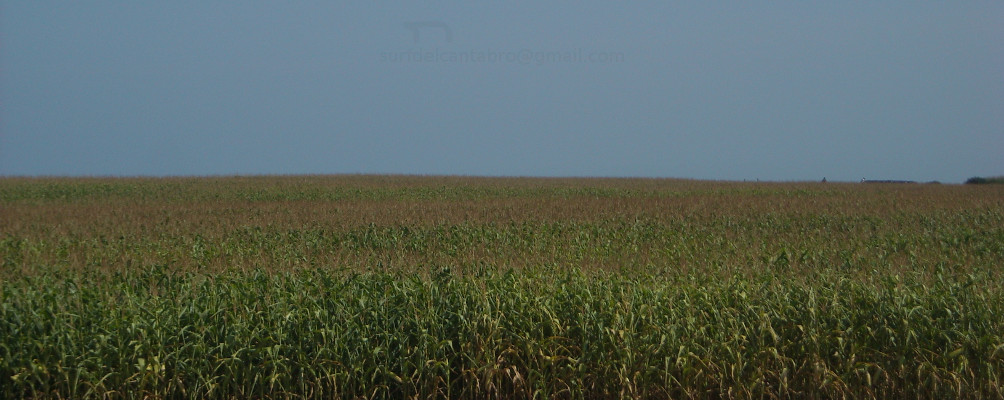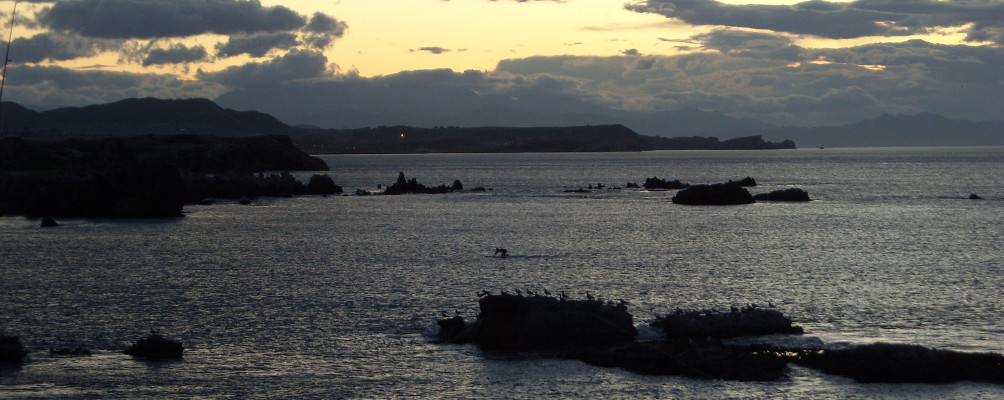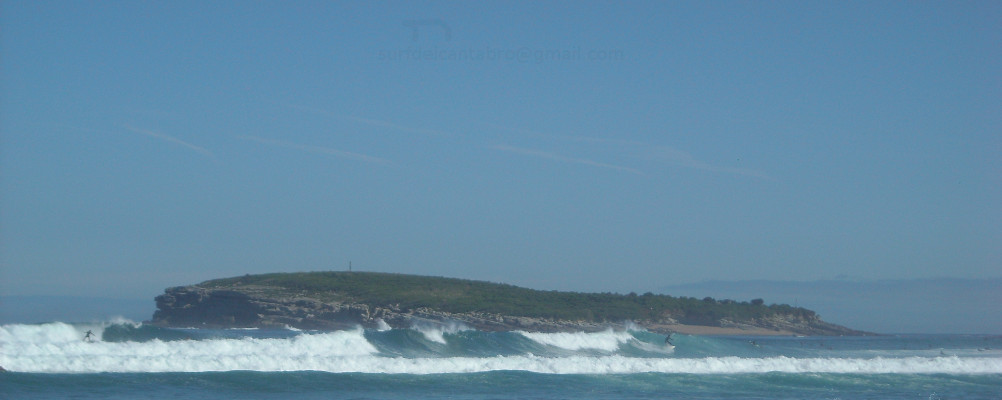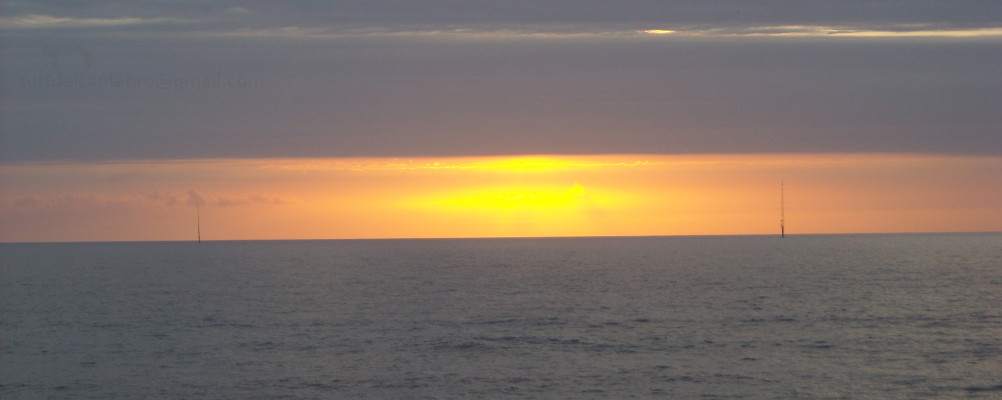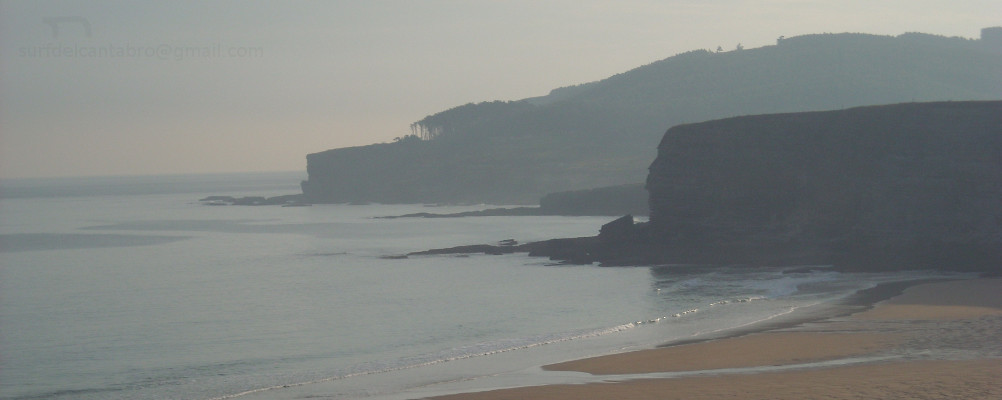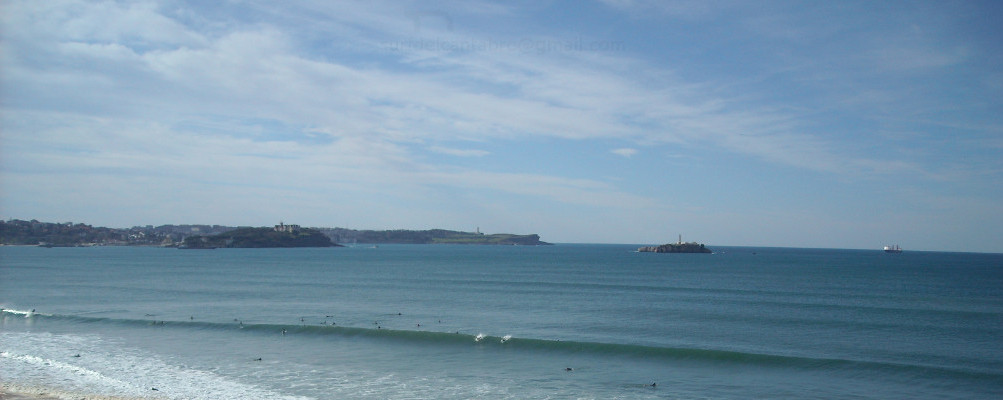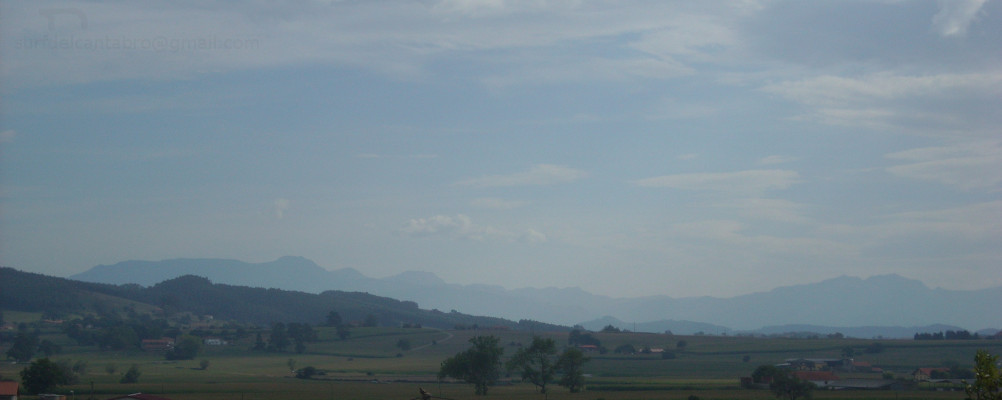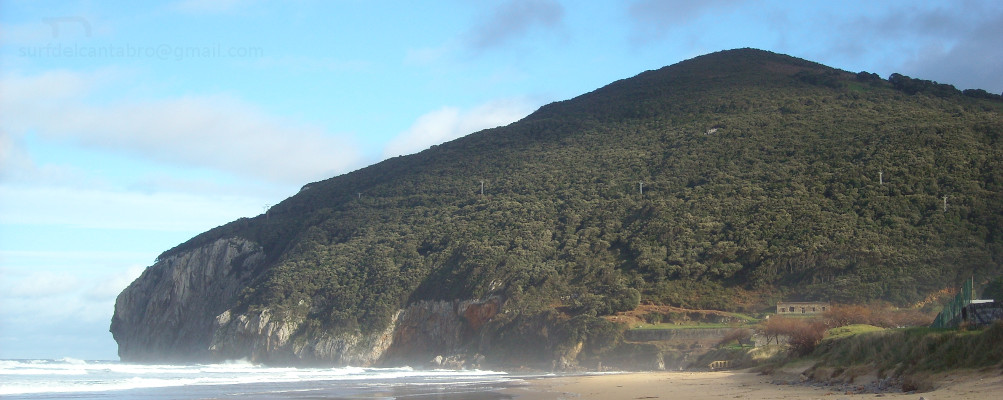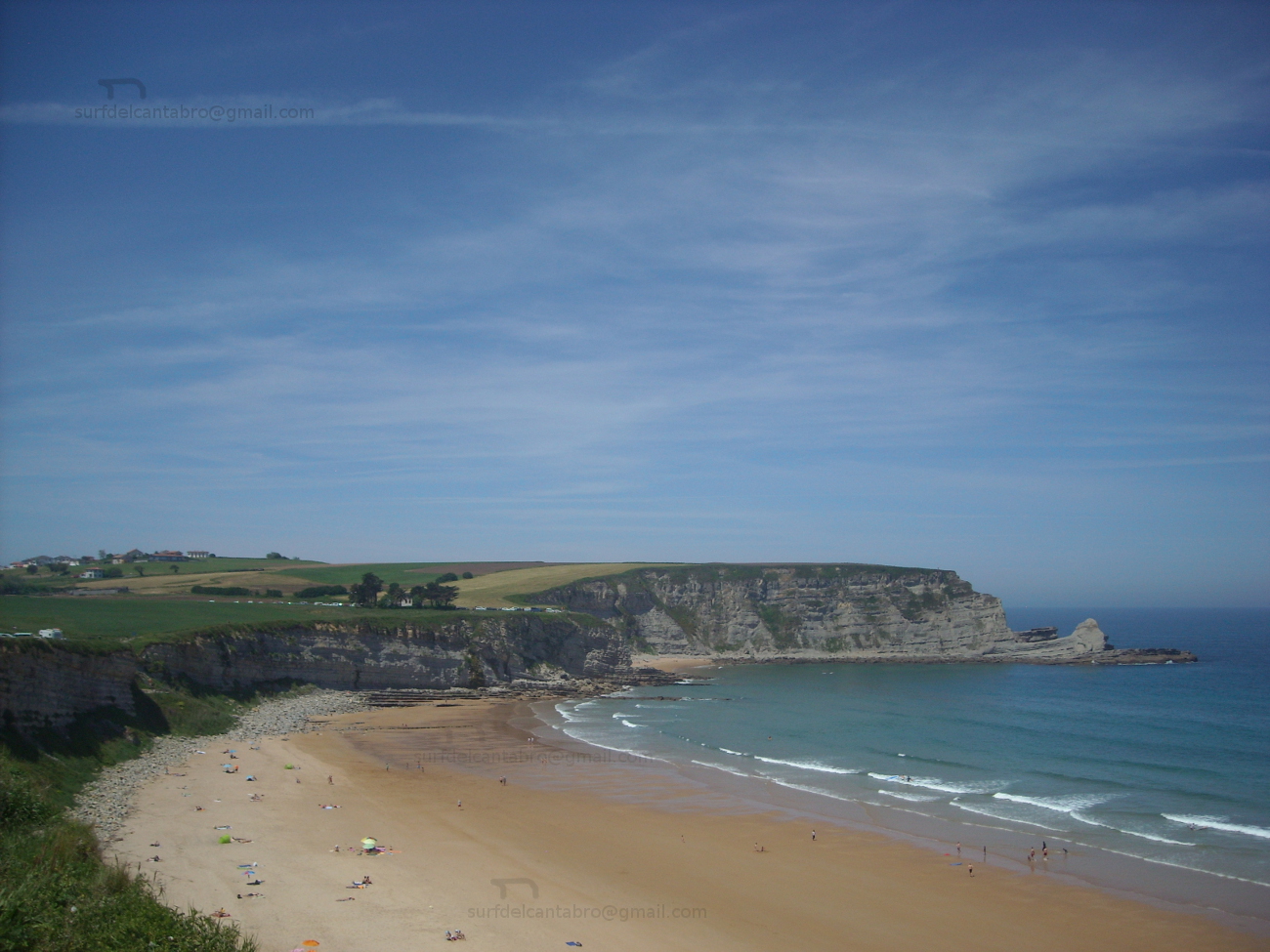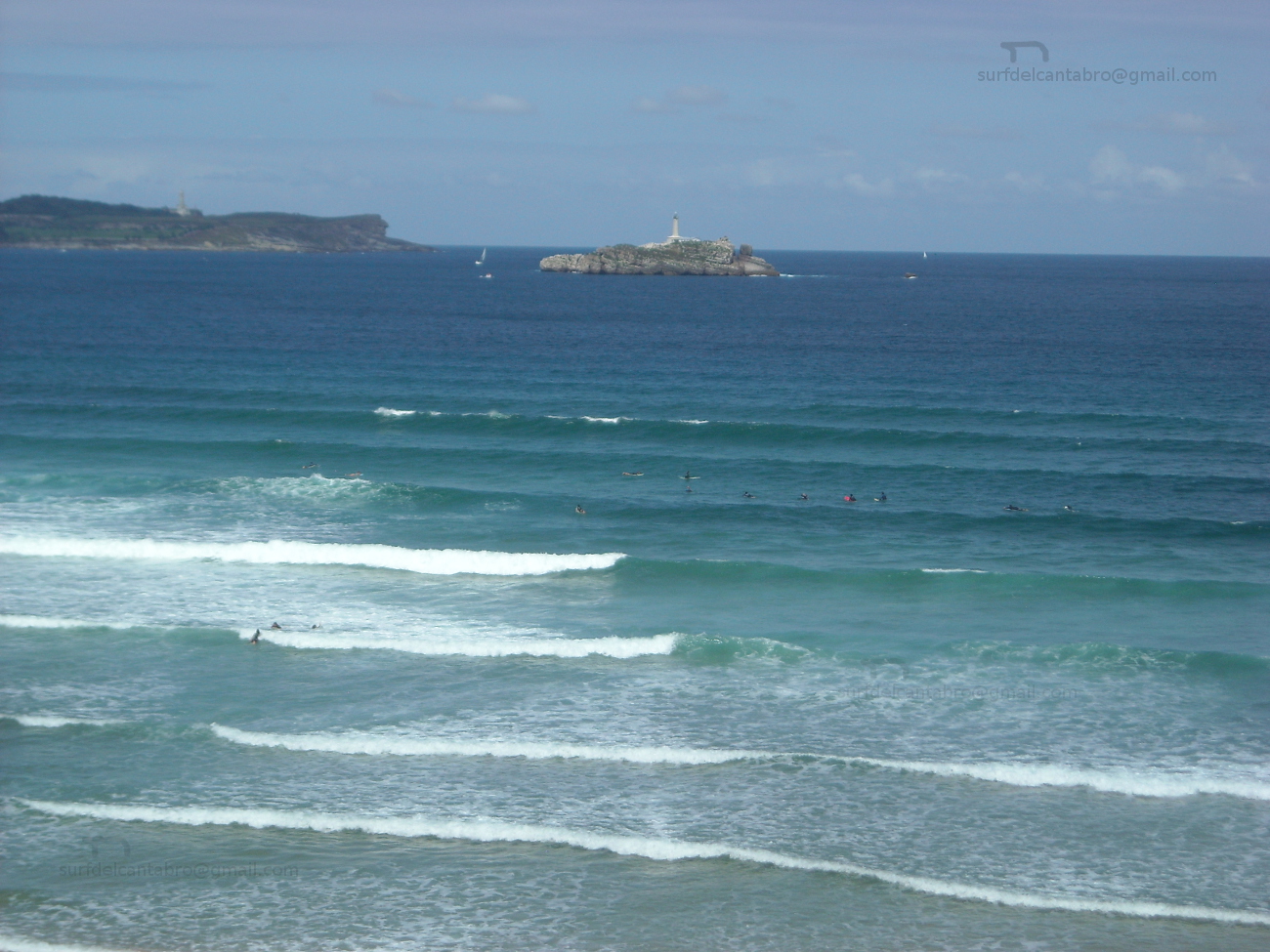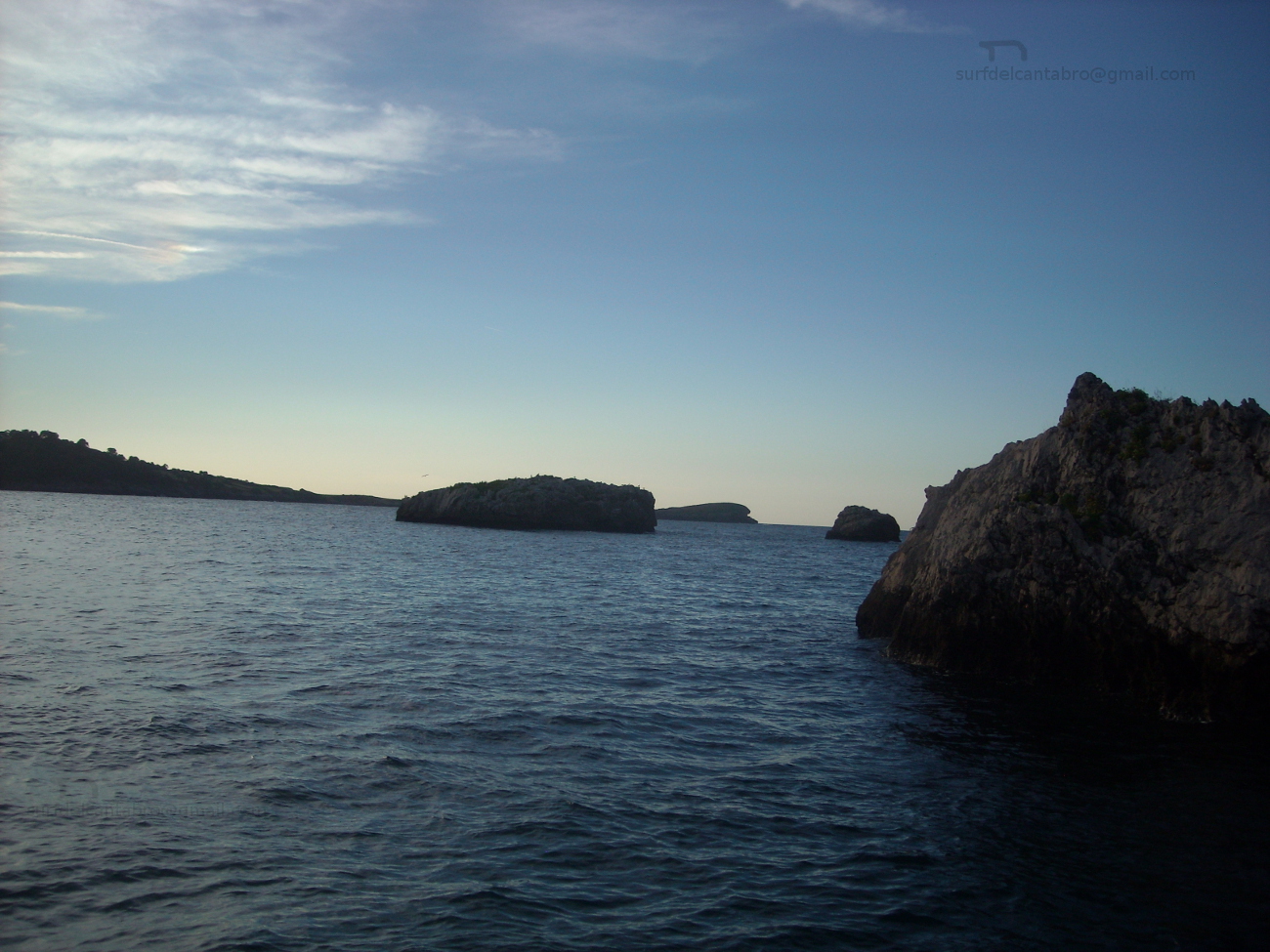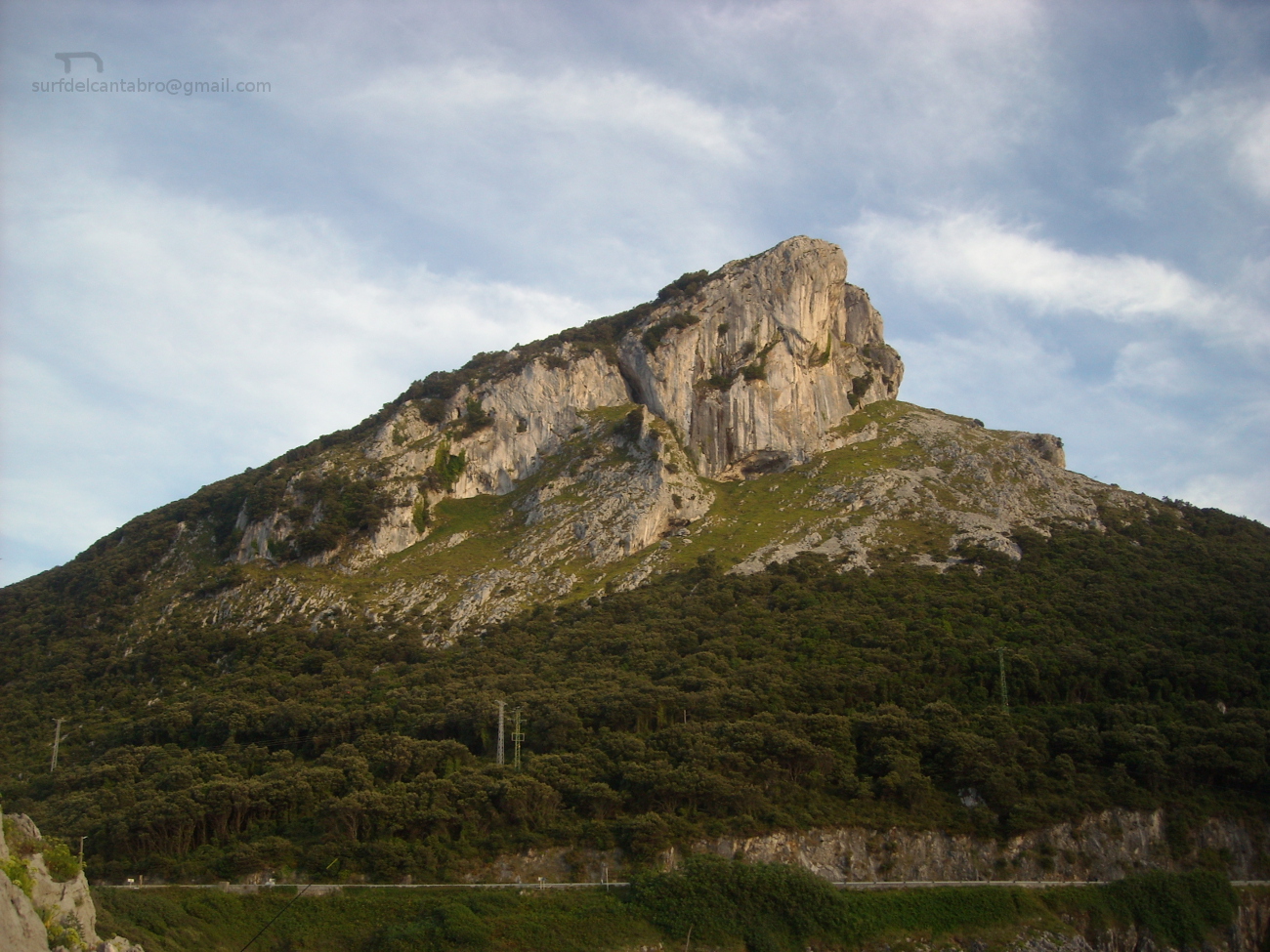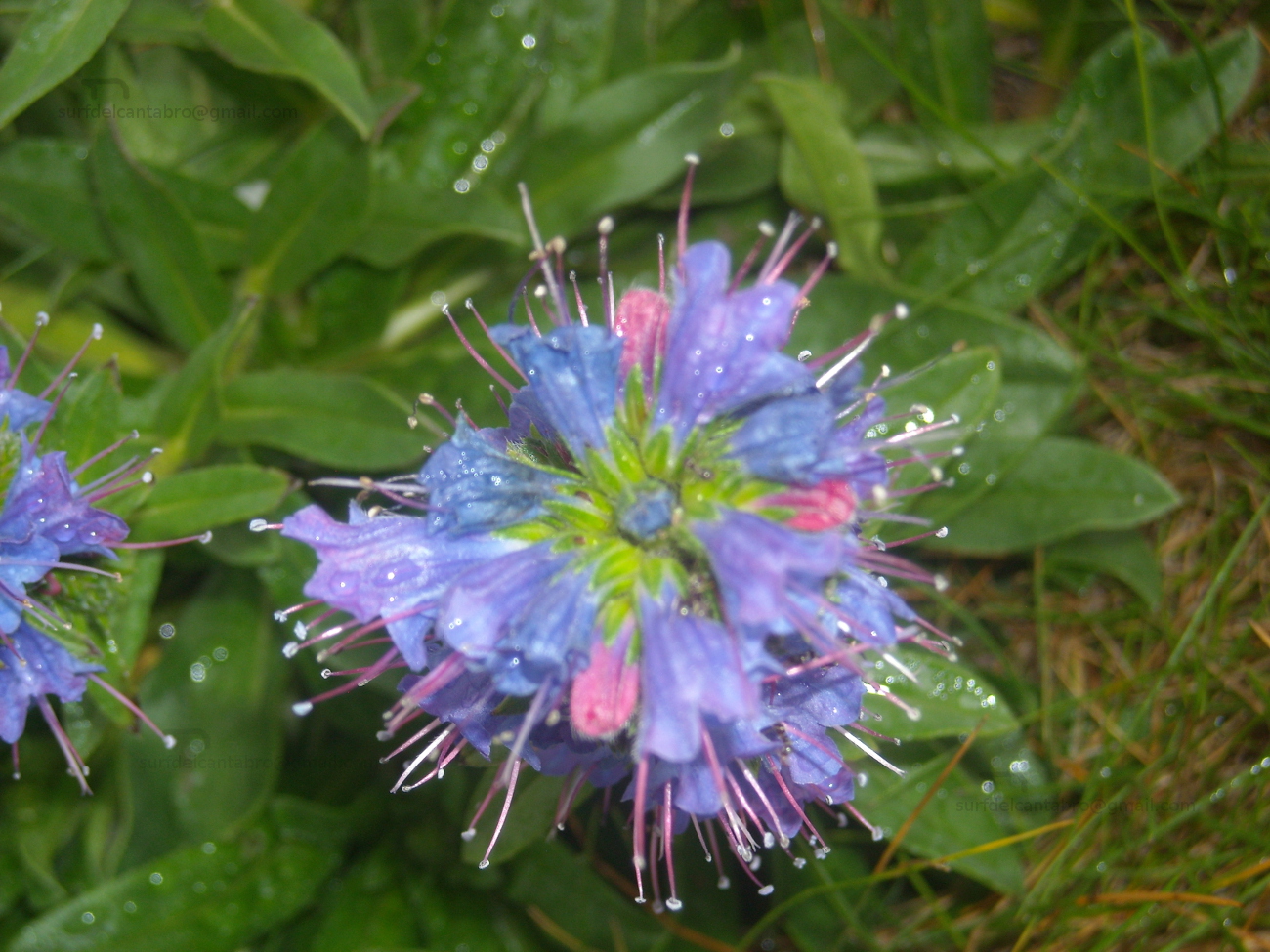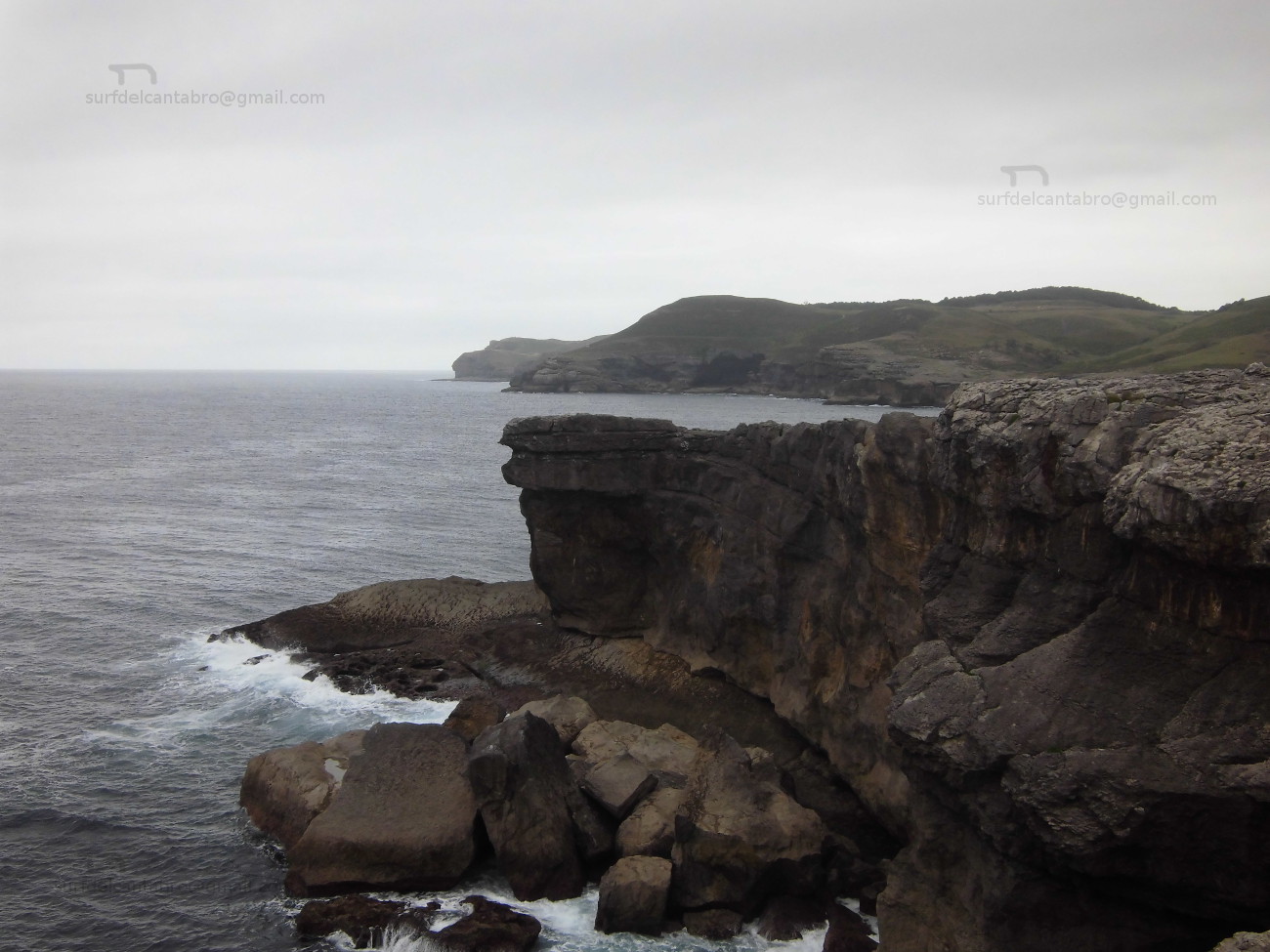Oyambre, playa
![]() La playa de Oyambre está situada en el municipio de Valdáliga, emplazado en la costa occidental de Cantabria. Situada dentro del Parque Natural de Oyambre, es un extenso arenal de 1800 metros de longitud dispuestos en linea recta y curvando su ala izquierda por la morfología de su entorno dominado por acantilados. El extremo derecho continúa a través de la costa cántabra hasta perderse en el horizonte.
La playa de Oyambre está situada en el municipio de Valdáliga, emplazado en la costa occidental de Cantabria. Situada dentro del Parque Natural de Oyambre, es un extenso arenal de 1800 metros de longitud dispuestos en linea recta y curvando su ala izquierda por la morfología de su entorno dominado por acantilados. El extremo derecho continúa a través de la costa cántabra hasta perderse en el horizonte.
La entrada a la playa se realiza a través de un pequeño aparcamiento habilitado para 50 vehículos, aproximadamente. La contemplación de Oyambre produce en el caminante una sensación acogedora e intima, que contrasta con la amplitud y enormidad del entorno. Salvaje y naturalmente dibujada, es recorrida por el viento en toda su plenitud que la visita de forma casi regular. Su extensión se plasma por medio de una llanura de arena endurecida, con una leve pendiente hasta la orilla, a modo de invitación para conocer sus aguas. La playa de oyambre, por sus características, sirvió en el siglo pasado de pista de aterrizaje del llamado «Pájaro amarillo»; primer avión que cruzó el Océano Atlántico en una travesía de 29 horas. Esto da una idea de la singularidad del lugar.
Baña el Mar la costa y la playa, ondula suavemente el fondo arenoso por los efectos de las mareas y el oleaje. Aparecen las ondas en diversos picos de olas que existen en la playa. Su forma pulida y recorrido alargado,en la zona central, se combina con áreas donde estas recorren menor extensión y favorecen las maniobras. Golpea el Mar Cantábrico al surfista, iniciando así la navegación, naciendo su viaje sobre las olas. Travesía prolongada y colmada, pues a la energía que inyecta la velocidad se suma la pureza del agua, del aire, la belleza de la costa al fondo, que por sensaciones llegan a uno mismo y terminan por prender el fuego en el interior.


Oyambre, beach
![]() The beach of Oyambre is placed in the municipality of Valdáliga, located in the western coast of Cantabria. Housed inside the Nature Reserve of Oyambre, it is an extensive sandbank of 1800 meters of length arranged on straight line; with a left wing curved because of the morphology of its environment dominated by cliffs. The right wing continues across the Cantabrian coast up to getting lost in the horizon.
The beach of Oyambre is placed in the municipality of Valdáliga, located in the western coast of Cantabria. Housed inside the Nature Reserve of Oyambre, it is an extensive sandbank of 1800 meters of length arranged on straight line; with a left wing curved because of the morphology of its environment dominated by cliffs. The right wing continues across the Cantabrian coast up to getting lost in the horizon.
The entry to the beach is realized across an small parking enabled for 50 vehicles, approximately. Oyambre’s contemplation produces in the wayfarer a cozy and intimate sensation, that contrasts with its length and enormity of its environment. Wild and naturally drawn, is crossed by the wind in all its fullness that visits it almost regularly. Its extension takes form by means of a plain of hard sand, with a slight earring up to the shore, as an invitation to know his waters. The beach of Oyambre, for its characteristics, was used int the last century as a runway of the so called yellow Bird; the first plane that crossed the Atlantic Ocean in a voyage of 29 hours. This gives an idea about the singularity of the zone.
The Sea bathes the coast and the beach, it waving softly the sandy bottom due to the effects of the tides and the surge. The waves appear in diverse beaks that exist in the beach. Its polished form and elongated tour, in the central zone, combines with areas where them are in less extension and allow the maneuvers. It strikes the Cantabrian Sea to the surfer, initiating in this way the navigation, borning his trip on the waves. Long and fulfilled voyage, because at the energy that injects the speed is added the purity of the water, of the air, the beauty of the coast in the background, which through its sensations come to oneself and them end for lighting the fire inside.

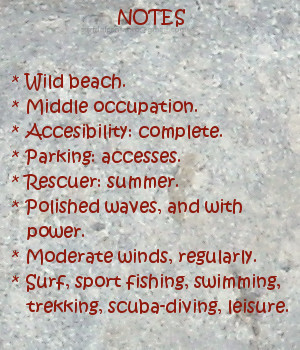
Ajo, playas
![]() Es Ajo una localidad situada en la costa oriental de Cantabria. Su abrupta y antigua costa se extiende a lo largo de más de 10 kilómetros a los que llega el Mar Cantábrico en estado natural para mostrar los matices que Ajo consigue reflejar. Salvaje y natural, anónimo y auténtico, desconocido en ocasiones y sin embargo familiarmente reconocible. Tiene la villa dos playas conocidas como Playa de Cuberris y Playa de Antuerta.
Es Ajo una localidad situada en la costa oriental de Cantabria. Su abrupta y antigua costa se extiende a lo largo de más de 10 kilómetros a los que llega el Mar Cantábrico en estado natural para mostrar los matices que Ajo consigue reflejar. Salvaje y natural, anónimo y auténtico, desconocido en ocasiones y sin embargo familiarmente reconocible. Tiene la villa dos playas conocidas como Playa de Cuberris y Playa de Antuerta.
Es la primera de ellas una playa, con la anchura suficiente para albergar varios picos de olas, con distintos comportamientos. A izquierdas y derechas abren sus recorridos, habilitando las maniobras o el trazado largo, pudiendo satisfacer a cualquier surfista que se introduzca en sus aguas. Los acantilados laterales protegen la zona y encarrilan el oleaje. Cuando la Mar está fuerte, practicar surf, se convierte en una actividad sólo recomendable para surfers experimentados y conscientes de los riesgos. Destaca el entorno que rodea a la playa y la visión que se tiene en el agua de él, que constituye un disfrute para los sentidos y la imaginación.
La playa de Antuerta es una cala de gran tamaño situada entre acantilados y con forma de media luna. Para llegar a ella, hay que recorrer una pequeña colina que oculta el arenal y la descubre a cada paso. La contemplación de su entorno traduce en emoción la altura de sus rocas y el sonido del mar. Las dimensiones más reducidas de Antuerta, junto con la presencia de rocas, hacen que sus olas sean aptas para los surfers más experimentados.
Disfrutar de las playas de Ajo que baña el Mar Cantábrico, pues el mismo agua que golpea Antuerta, ladea la colina y baña con trazo Antuerta; produciendo olas ondulantes de peculiar trazado. Ir y conocer, para después volver.


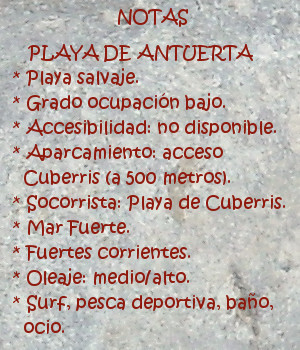
Ajo, beaches
![]() It is, Ajo, a locality placed in the oriental coast of Cantabria. Its abrupt and former coast spreads through more than 10 kilometres, to which the Cantabrian Sea comes in natural condition to show the shades that Ajo reflects of it. Savage and natural, anonymous and authentic, stranger in occasions and nevertheless familiarly recognizable. The villa has two beaches known as Cuberris’s Beach and Antuerta’s Beach.
It is, Ajo, a locality placed in the oriental coast of Cantabria. Its abrupt and former coast spreads through more than 10 kilometres, to which the Cantabrian Sea comes in natural condition to show the shades that Ajo reflects of it. Savage and natural, anonymous and authentic, stranger in occasions and nevertheless familiarly recognizable. The villa has two beaches known as Cuberris’s Beach and Antuerta’s Beach.
It is the first one of them a beach, with the sufficient width to shelter several beaks of waves, with different behaviors. For left and right side them open its tours, enabling the maneuvers or the long tracing, being able to satisfy any surfer that sail in its waters. The lateral cliffs protect the zone and put on the right lines the surge. When the Sea is rough, to practice surf turns into an activity only advisable for experienced surfers and conscious of the risks. Stands out the natural environment that makes a complete picture of the beach and the vision from the water of it, which constitutes an enjoyment for the senses and the imagination.
The beach of Antuerta is a big cove placed between cliffs and with form of half moon. To come there , it is necessary to cross a small hill that conceals the sandbank and discovers it to each step. The contemplation of its environment translates in emotion the height of its rocks and the sound of the Sea. The limited dimensions of Antuerta, together with the rocks presence, do that its waves are suitable and for the most experienced surfers.
You could enjoy the beaches of Ajo that bathes the Cantabrian Sea, because the same waters that strike Antuerta, tilt themselves through the hill and bathes with lines Antuerta; producing undulating waves of peculiar tracing. To go and to know, later to return.

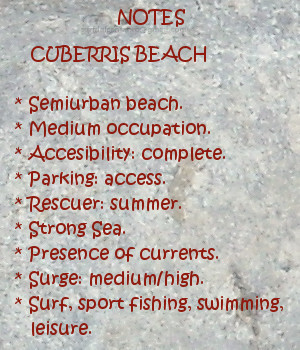
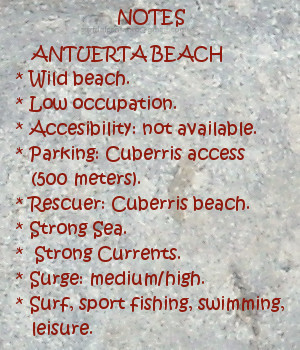
Los Locos, playa
![]() La playa de Los Locos está situada en el municipio de Suances, en la costa central de Cantabria. Su longitud aproximada de 500 metros y anchura media de 20 metros constituye el emplazamiento natural donde terminan las olas que entran a la Ensenada de Cabrera. Es Los Locos una playa urbana que presenta cierto aislamiento debido a su ubicación. Localizada a los pies de los acantilados que unen Suances con la Punta del Dichoso y forman estos una península que hace de cierre y acota su ala este.
La playa de Los Locos está situada en el municipio de Suances, en la costa central de Cantabria. Su longitud aproximada de 500 metros y anchura media de 20 metros constituye el emplazamiento natural donde terminan las olas que entran a la Ensenada de Cabrera. Es Los Locos una playa urbana que presenta cierto aislamiento debido a su ubicación. Localizada a los pies de los acantilados que unen Suances con la Punta del Dichoso y forman estos una península que hace de cierre y acota su ala este.
Es una de las zonas de la costa cántabra que presenta olas durante todo el año. El fuerte oleaje y la presencia de vientos contribuyen a la calidad de sus ondas. El pico central adquiere buen tamaño, 2 metros aproximadamente. Cercano al ala oeste, abre a ambos lados. Destacando su salida izquierda que puede alcanzar largo recorrido con presencia de tubos.
El acceso al arenal se realiza por un pronunciado desnivel a través de la calzada que hay habilitada. En el momento del descenso, es cuando veremos la playa. Percibiendo sus dimensiones reales y naturaleza propia que van más allá de las palabras. Alzando la vista, ante el caminante, aparece una visión panorámica de toda la zona. La avalancha de estímulos e información dan paso al sencillo disfrute de los sentidos. Cuando los atardeceres son coloreados, y el olor del Mar Cantábrico inunda las inmediaciones de la playa de Los Locos, comienza la hora de los sueños que algún amanecer podrá plasmar.

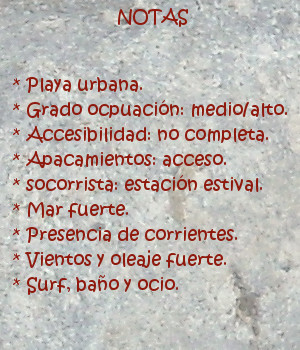
Los Locos, beach
![]() The beach of Los Locos is placed in the municipality of Suances, in the central coast of Cantabria. Its approximate length of 500 meters and average width of 20 meters constitutes the natural emplacement where finish the waves that enter to the Inlet of Cabrera. It is The Madmen an urban beach that presents certain isolation due to its location. Located to the feet of the cliffs that joins Suances with El Dichoso Tip, these form a peninsula that it does of closing and protect its east wing.
The beach of Los Locos is placed in the municipality of Suances, in the central coast of Cantabria. Its approximate length of 500 meters and average width of 20 meters constitutes the natural emplacement where finish the waves that enter to the Inlet of Cabrera. It is The Madmen an urban beach that presents certain isolation due to its location. Located to the feet of the cliffs that joins Suances with El Dichoso Tip, these form a peninsula that it does of closing and protect its east wing.
It is one of the zones of the Cantabrian coast that presents waves all the year. The strong surge and the wind presence contribute to the quality of its waves. The central break acquires good size, 2 meters approximately. It rise near the west wing, and opens to both sides. Emphasizing its left path that can reach an important length with presence of pipes.
The access to the sandbank is realized by a pronounced slope across the causeway that has been enabled. In the moment of the descent, is when we will see the beach. Perceiving its real dimensions and own nature that go beyond the words. Lifting the sight, in front of the wayfarer, appears a panoramic vision of the whole zone. The avalanche of stimuli and information give step to the unassuming enjoyment of the senses. When the late afternoons are colored, and the smell of the Cantabrian Sea floods the surrounding areas of Los Locos beach, begins the hour of the dreams that some dawn will be able to form.

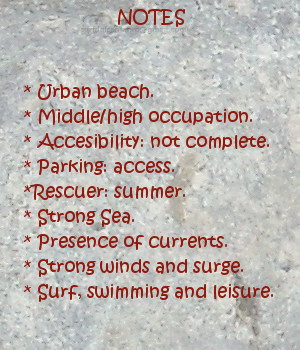
La Vaca, lugar
![]() La Vaca es la ola más grande de Cantabria. Superando con facilidad los 5 metros de altura, ha registrado valores superiores a los 10 metros y en competición las olas surfeadas alcanzaron los 7 metros.
La Vaca es la ola más grande de Cantabria. Superando con facilidad los 5 metros de altura, ha registrado valores superiores a los 10 metros y en competición las olas surfeadas alcanzaron los 7 metros.
Situada en la costa norte de Santander, su localización se emplaza entre la playa de El Bocal y los acantilados de Las Canteras de Cueto. Su oleaje, superior al resto de olas que existen en la zona, se debe a varios factores. La fuerza y tamaño del Mar Cantábrico en esta parte de la costa son importantes, junto con las características del fondo local contribuyen a crear un spot único. La sucesión del fondo fragmentado y rocoso, que llega hasta Las Canteras con una pendiente del 65%, provocan la proyección de las olas y la concentración de la energía. El sistema compuesto por todos estos factores produce olas de tamaño mayor a los registrados en los spots cercanos. El fondo quebrado traslada su ser a la ola esculpiendo la superficie de la onda con irregular forma.
Es La Vaca una ola gigante, potente y peligrosa cuyos fondos de roca se encuentran a apenas metro y medio de la superficie del agua con la bajamar. Los acantilados que la rodean dificultan el acceso de los surfistas y a su vez componen un mirador natural con vistas panorámicas a la gran ola y esta parte salvaje y monumental de la costa Quebrada. Su acceso, a través de una senda pública, conducirá al paseante inquieto a descubrir la ola, el entorno y el Mar. Acompañados, a cada paso, por las vacas que pastan libres a lo largo del recorrido con mirada curiosa mientras suena de fondo la natural relación entre el Mar Cantábrico y la costa.

La Maruca, place
![]() La Vaca is the biggest wave of Cantabria. It can overcome 5 meters of height, it has been registered values over 10 meters and in competition the navigated waves reached 7 meters.
La Vaca is the biggest wave of Cantabria. It can overcome 5 meters of height, it has been registered values over 10 meters and in competition the navigated waves reached 7 meters.
Placed on the north coast of Santander, its location is placed between the beach of El Bocal and the cliffs of The Quarries of Cueto. Its surge, bigger than the rest of the waves that exist in the zone, owes to several factors. The force and size of the Cantabrian Sea in this part of the coast are important, together with the characteristics of the local bottom which help to create the original spot. The succession of the fragmented and rocky bottom, which comes up to The Quarries with a slope of 65 %, provokes the projection of the waves and the concentration of the energy. The system composed by all these factors produces waves of size bigger than the registered ones in the nearby spots. The broken bottom translates its nature to the wave and sculpts the surface of the wave with irregular form.
It is La Vaca a giant, powerful and dangerous wave which marine rocky bottoms are to scarcely meter and a half of the surface of the water in the low tide. The cliffs that surround it impede the access of the surfers and in turn them compose a natural viewing-point with panoramic to the great wave and this wild and monumental part of the Quebrada Coast. Its access, across a public path, will drive the curious walker to discover the wave, the environment and the Sea. Accompanied, on every step, with the cows that graze free along the tour with curious look while the natural relation between the Cantabbrian Sea and the coast sounds around.

